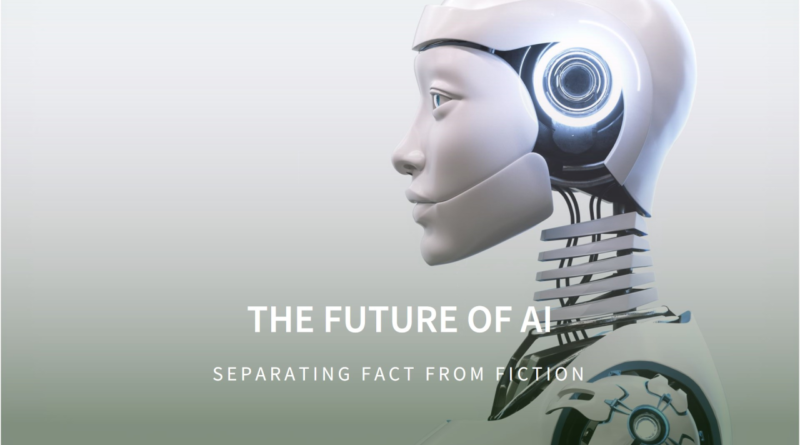AI Robots Are Taking Over: How They’re Changing Your World Faster Than You Think
Artificial Intelligence (AI) robots have rapidly transitioned from science fiction to essential tools, revolutionizing industries and becoming an integral part of daily life. From healthcare and manufacturing to retail and even home environments, AI robots are changing how we live and work at an unprecedented pace. This article explores the transformative impact of AI robots, the technologies driving their evolution, and the opportunities and challenges they present.
Understanding AI Robots: The Basics

AI robots combine the physical capabilities of robots with the cognitive functions of artificial intelligence. They are designed to perform tasks autonomously or semi-autonomously, often outperforming humans in speed, precision, and endurance. AI provides these robots with capabilities such as learning from data, recognizing patterns, and making decisions based on real-time information.
Types of AI Robots
- Industrial Robots: Used in manufacturing for repetitive tasks like assembly, welding, and painting.
- Service Robots: Found in healthcare, retail, and hospitality industries.
- Humanoid Robots: Designed to interact with humans, often used for companionship, education, or customer service.
- Autonomous Mobile Robots (AMRs): Used in logistics and warehousing for tasks like inventory management and goods transport.
AI Robots in Key Industries

1. Healthcare
The healthcare industry has seen some of the most profound impacts of AI robotics. Surgical robots like the da Vinci Surgical System assist surgeons in performing minimally invasive procedures with enhanced precision. AI robots also support diagnostics; for instance, AI-powered systems can analyze medical imaging to detect diseases such as cancer or neurological disorders with high accuracy.
Patient Care: Robots like PARO, a therapeutic robot, provide companionship to patients, particularly the elderly or those with mental health issues. AI robots also handle routine tasks such as delivering medications or sterilizing hospital rooms.
2. Manufacturing and Automation
AI robots have transformed manufacturing by increasing efficiency and reducing errors. Companies like Tesla and BMW utilize robotic arms to streamline production. These robots handle repetitive tasks with consistent precision, leading to higher output and lower costs.
Predictive Maintenance: AI in robotics enables machines to predict when maintenance is required, preventing costly downtimes and extending the life of equipment.
3. Retail and Hospitality
In retail, AI robots are enhancing customer experience and optimizing operations. Robots like Tally autonomously scan shelves to track inventory, ensuring stock availability and accurate pricing. In hospitality, robots such as Pepper greet guests, provide information, and even handle check-ins at hotels.
4. Agriculture
AI robots are also making their mark in agriculture. Machines like harvest bots can identify ripe produce, pick crops efficiently, and even monitor soil health. These advancements help increase agricultural productivity and reduce waste.
5. Logistics and Supply Chain
Autonomous robots in logistics are revolutionizing how goods are moved and stored. Companies like Amazon and FedEx use AI robots for tasks such as sorting packages and delivering goods to customers. Drones powered by AI are also beginning to play a role in last-mile delivery.
AI Robots at Home

Beyond industrial and commercial applications, AI robots are becoming a staple in homes. Robot vacuum cleaners like Roomba autonomously clean floors, while robotic assistants such as Amazon Astro provide security and convenience by monitoring the home and responding to voice commands.
Companion Robots: Robots like Miko and Anki Vector serve as interactive companions, particularly for children and the elderly, offering entertainment, learning, and emotional support.
The Technology Behind AI Robots
1. Machine Learning and Neural Networks
Machine learning (ML) allows AI robots to learn from data and improve their performance over time without explicit programming. Neural networks, a subset of ML, enable robots to recognize patterns in data, such as identifying objects in images or understanding spoken language.
2. Computer Vision
Computer vision enables robots to interpret and process visual information from their surroundings. This technology is crucial for tasks like navigation, object detection, and facial recognition.
3. Natural Language Processing (NLP)
NLP allows AI robots to understand and respond to human language. This technology is used in customer service robots and virtual assistants, enabling them to have meaningful conversations with users.
4. Robotics Hardware
The physical components of AI robots include sensors for detecting environmental changes, actuators for movement, and processors for executing complex algorithms. Advances in robotics hardware have made robots more agile, durable, and efficient.
Challenges and Ethical Concerns

While AI robots bring numerous benefits, their widespread adoption also raises significant challenges and ethical questions.
1. Job Displacement
Automation and AI robots may replace jobs traditionally performed by humans, particularly in sectors like manufacturing and logistics. This shift necessitates reskilling and upskilling workers to prepare them for roles that require human creativity and critical thinking.
2. Privacy and Security
AI robots equipped with cameras and sensors may inadvertently collect sensitive data, raising concerns about privacy and data protection. Ensuring robust cybersecurity measures is critical to preventing misuse.
3. Ethical Decision-Making
As robots become more autonomous, ethical dilemmas arise. For example, in healthcare, how should an AI system prioritize patients? In self-driving cars, how should the system respond in situations where accidents are unavoidable? These questions highlight the need for ethical guidelines and regulatory frameworks.
The Future of AI Robots

The future of AI robots is incredibly promising, with advancements expected to drive further innovation. Here are some potential developments:
1. Enhanced Emotional Intelligence
Future robots could possess more advanced emotional intelligence, allowing them to recognize and respond to human emotions more effectively. This would be particularly valuable in healthcare and customer service.
2. Collaboration with Humans
AI robots will increasingly work alongside humans, complementing their skills rather than replacing them. This collaboration will lead to safer and more productive work environments.
3. Expanded Use in Disaster Response
AI robots equipped with sensors and advanced mobility could play a crucial role in disaster response, performing tasks like searching for survivors, delivering supplies, and assessing hazardous environments.
4. Personalized AI Assistants
Home and personal robots will become more personalized, adapting to individual preferences and routines to offer a highly customized experience.
Conclusion
AI robots are reshaping industries and daily life, offering transformative solutions to complex problems. From improving efficiency and productivity in the workplace to enhancing convenience and security at home, these robots are becoming indispensable tools. However, as we embrace this technological revolution, it is essential to address the accompanying challenges and ensure that AI robots are developed and deployed responsibly.
The journey of AI robots is just beginning, and their potential to revolutionize the world is limitless. For those looking to stay ahead of the curve, platforms like Hix AI provide invaluable insights and tools to navigate the rapidly evolving landscape of AI technology.







